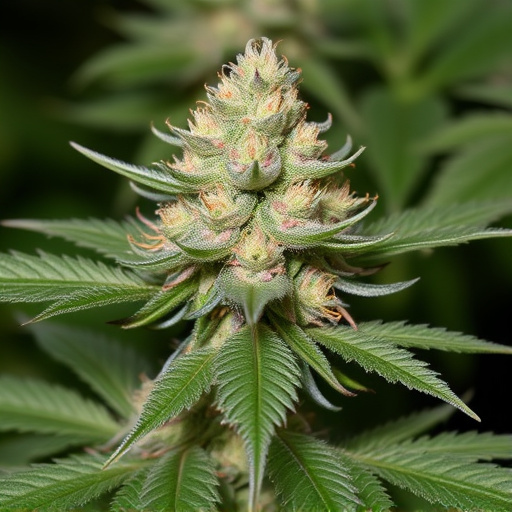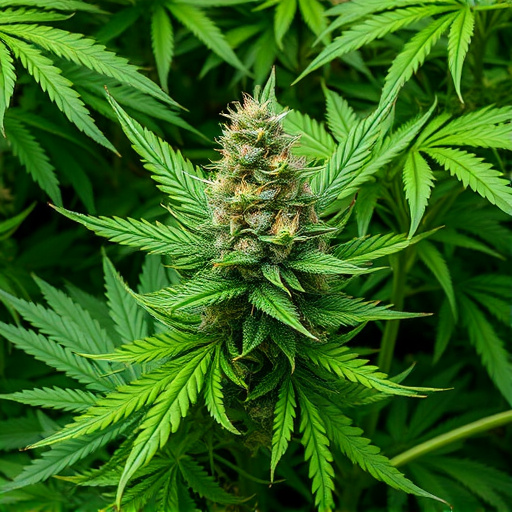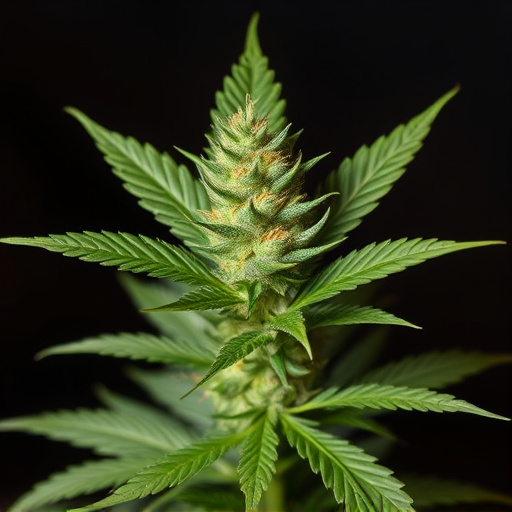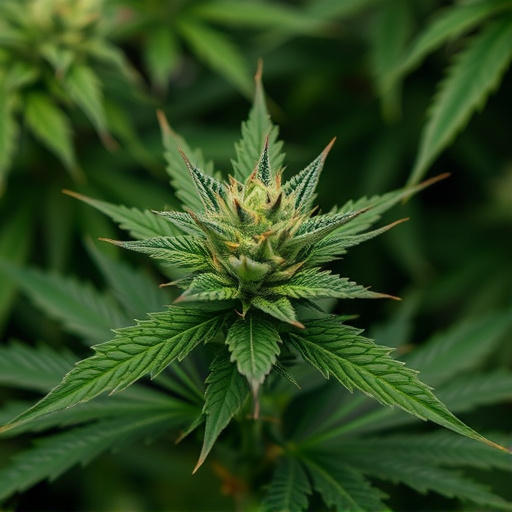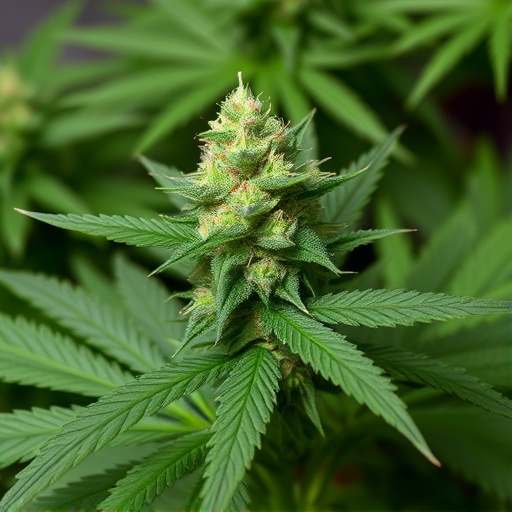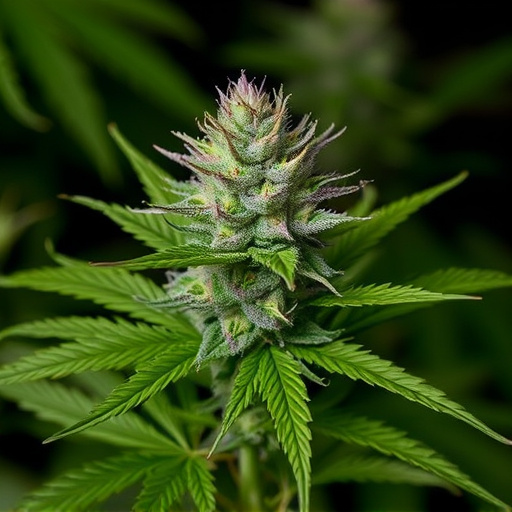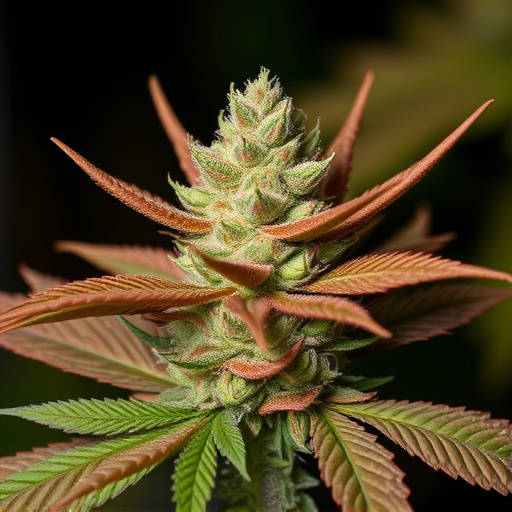Cannabis offers a promising alternative for pain management through THC and CBD, key compounds interacting with the endocannabinoid system. While THC reduces inflammation and blocks pain signals, CBD modulates the pain response without psychoactive effects. Specific cannabis strains provide diverse effects tailored to individual needs, with high CBD content offering anti-inflammatory and analgesic benefits. Terpene profiles further enhance relief. Exploring different strains and their ratios of THC:CBD in various delivery methods allows personalized pain management addressing physical and psychological aspects.
Discover the powerful potential of THC and CBD in pain management. These compounds, found in cannabis plants, offer natural relief for chronic and acute pain. This article explores how they interact with our bodies’ endocannabinoid system to alleviate discomfort, with a focus on different cannabis strains known for their therapeutic effects. Learn about integrating these natural remedies into your pain management strategy safely and effectively.
- Understanding THC and CBD: The Key Players in Pain Management
- Cannabis Strains for Pain Relief: Unlocking the Potential
- Incorporating THC and CBD into Your Pain Management Plan
Understanding THC and CBD: The Key Players in Pain Management
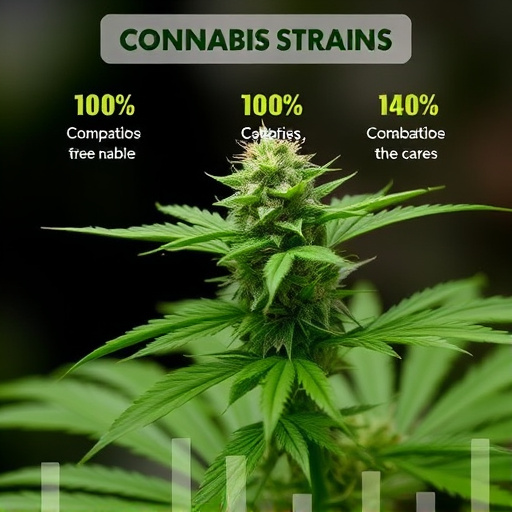
Cannabis has gained significant attention for its potential in pain management, with two prominent compounds leading the way: THC (Tetrahydrocannabinol) and CBD (Cannabidiol). These natural substances have distinct effects on the human body, offering a new avenue for those seeking alternative treatments. THC, known for its psychoactive properties, interacts with the endocannabinoid system (ECS), which plays a crucial role in regulating pain perception. By binding to receptors in this system, THC can reduce inflammation and block pain signals, providing relief for chronic conditions like arthritis or neuropathy.
On the other hand, CBD does not have psychoactive effects, making it a popular choice for those seeking the benefits of cannabis without the high. Research suggests that CBD interacts with various receptors and enzymes in the ECS, modulating pain response. It has shown promise in reducing anxiety and inflammation associated with pain, making it an attractive option for managing conditions like fibromyalgia or muscle soreness. The unique interplay between THC and CBD in specific cannabis strains offers a wide range of effects, catering to individual needs in pain management.
Cannabis Strains for Pain Relief: Unlocking the Potential
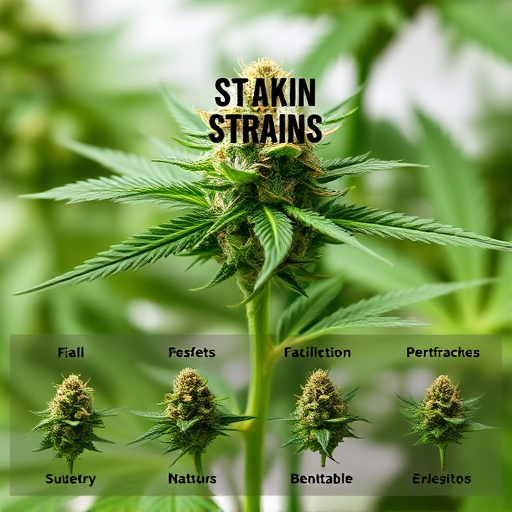
Cannabis has long been used for its medicinal properties, and one of its most promising applications is in pain management. When it comes to cannabis strains for pain relief, understanding the unique effects of different varieties can be key to unlocking optimal treatment. Many patients find relief through specific cannabis strains known for their high CBD (cannabidiol) content, as these tend to offer anti-inflammatory and analgesic benefits without the intoxicating effects associated with THC (tetrahydrocannabinol).
CBD-rich strains often produce a calming and soothing sensation, helping to reduce chronic pain and inflammation. The right cannabis strain can provide a natural alternative for managing conditions like arthritis, fibromyalgia, and nerve damage. By selecting strains with specific terpene profiles, which are aromatic compounds that enhance the effects of cannabinoids, patients can further customize their pain management experience. Terpenes like linalool and myrcene are commonly sought after for their calming and analgesic properties, offering additional relief beyond what CBD or THC alone can provide.
Incorporating THC and CBD into Your Pain Management Plan
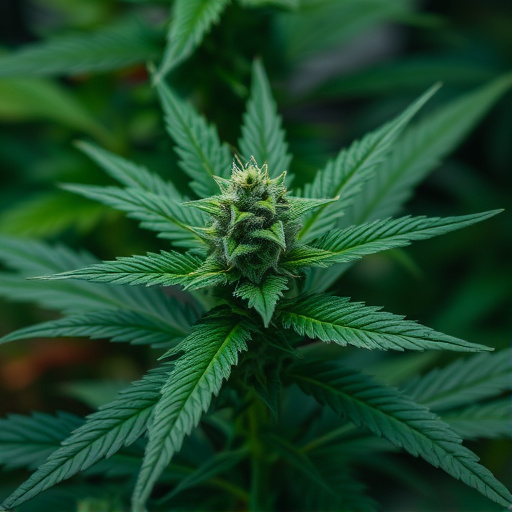
Incorporating THC (tetrahydrocannabinol) and CBD (cannabidiol) into a pain management plan can offer alternative approaches for those seeking relief. Both compounds, derived from cannabis plants, have shown promise in various studies due to their unique effects on the human body’s endocannabinoid system. While THC is known for its psychoactive properties, causing feelings of euphoria and relaxation, it also interacts with pain receptors, reducing inflammation and inhibiting nerve signals that contribute to pain perception. On the other hand, CBD doesn’t produce a ‘high’ and instead has anti-inflammatory and analgesic (pain-relieving) effects. It can help manage chronic pain conditions by interacting with specific receptors in the brain and body, potentially offering a more balanced option for pain management.
When considering cannabis strains for pain, it’s essential to explore different varieties and their specific effects. Sativa strains are often preferred for their uplifting and energizing properties, helping reduce tension and improve mobility. Indica strains, with their calming and sedative effects, may be better suited for night-time use to promote relaxation and alleviate insomnia associated with pain. Hybrid strains offer a combination of both sativa and indica characteristics, providing a more balanced experience. Combining THC and CBD in specific ratios through various delivery methods like oil, capsules, or topical creams can help individuals tailor their pain management routine, addressing both the physical symptoms and potential psychological aspects of chronic pain.
THC and CBD, two prominent compounds in cannabis, offer promising avenues for pain management. By understanding their unique interactions with the body’s endocannabinoid system, individuals can leverage the therapeutic potential of cannabis strains for effective pain relief. Incorporating these natural substances into comprehensive pain management plans may provide much-needed reprieve, allowing folks to navigate their daily lives with renewed comfort and reduced dependence on traditional pharmaceuticals. The evolving landscape of cannabis research continues to unveil innovative solutions, highlighting the profound effects of cannabis strains in addressing various health concerns.
